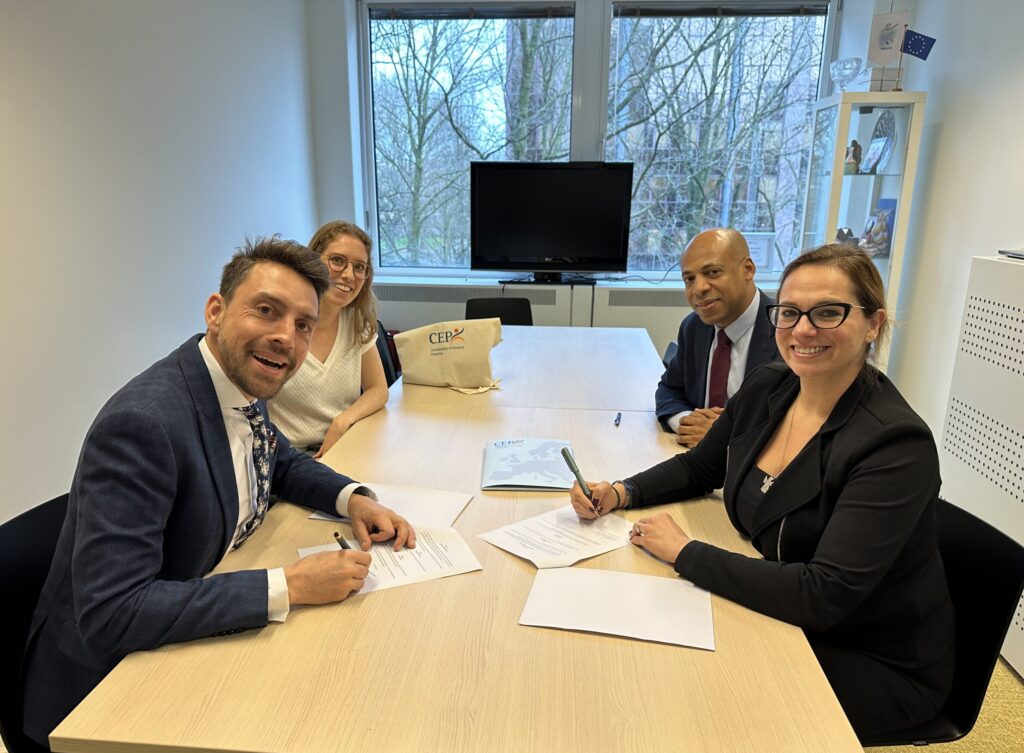Previous Article
News
Treatment of Violent Extremist Offenders in Sweden: the Entré programme
Violent extremist offenders (VEOs) is a group of offenders that constitutes a special challenge for correctional services. The demands for security, whilst in prison, ask for special arrangements, but safety and security whilst in probation after release also call for effective interventions to reduce the risk of new crimes motivated by radicalised views and activities. This article is a presentation of a new Swedish effort to include systematic treatment for the transition of VEOs from prison to community.
The Swedish strategy
The Swedish Prison and Probation Service (SPPS) has come up with a counter-radicalisation strategy combining security efforts with intensive treatment to improve transition to community for identified VEOs that are at risk for future violent behaviour and associations with persons and environments supporting violent extremism. This include keeping proper order and security, treating prisoners, parolees and probationers with dignity and respect, as well as providing directed services and programmes to lay pathways away from violent extremism where the radicalised person ideally distances him/herself from past radicalised lifestyle and violent acts.
The Entré Programme
To process VEO’s personal barriers to change and strengthen skills needed to establish a meaningful lifestyle outside extremist environments, we use an offender treatment programme called Entré. The name of the programme is carefully chosen to illustrate that it is not only about leaving an old lifestyle, but primarily about beginning a new way of life, establish new associates and, in some cases, adopt a new identity. Entré is a one-to-one cognitive-behavioural programme developed within the SPPS, originally designed to support clients to leave organised criminal groups or environments.
The client and therapist meet each other in person. An Entré therapist is not supposed to be an expert in the specific ideology or religion and does not challenge or discuss right or wrong in the viewpoints the client hold. Relying on the principle of disengagement, interventions should, from ethical and humane points of views, not focus on changing radicalised views, but the use of violence or other criminal acts and support the person’s own efforts to distance him/herself from radicalised groups and environments. The therapist meets the client within the frame of a professional relationship, where the client is the main expert on his life and his mental world. The role of the therapist is to show how the client’s thoughts and behaviours have resulted in problems and supply the client with alternative perspectives and behaviours that increases his possibilities to lead a constructive life.
Criminogenic Needs and Themes in Entré
Entré is structured around themes that address criminogenic needs of violent offenders. The structure and content of the Entré programme (themes and treatment strategies) are primarily aimed towards history of aggression & violence, interpersonal relations & associates, attitudes and values, and identity & self-image. These areas of criminogenic needs are connected to the degree of exposure for high risk situations, emergence of thoughts supporting violence and disturbing feelings that are difficult to handle as well as the actual performance of violent acts. The work on themes and treatment strategies of the Entré programme are therefore aimed to help support the client to
- Avoid future exposure to high risk situations;
- Decrease dysfunctional interpretation and experiences in high risk situations;
- Change or manage emotions associated with high risk situations;
- Expand the behaviour repertoire and make it more flexible to make alternative prosocial behaviours to violent or criminal acts available to the client.
A distinctive feature of Entré is it’s components of practical problem-solving that aims to overcome real-life barriers and thereby facilitate leaving radicalised environments and associates. The client’s prosocial skills and other personal resources will be the vehicles to find solutions to overcome these barriers.
Individual Case Formulation
Treatment always starts with a thorough analysis of the structured risk and needs assessment that have been conducted. Although there are risk and need factors that are common among VEOs, how these factors are expressed varies from person to person. For instance, a VEO that was leading a lonely life and was radicalised mainly by internet activities, like social media will probably have different problems regarding interpersonal relations and associates, compared to a VEO that has been radicalised together with other gang members at the local community. The next step in the assessment is therefore to get a more detailed picture of the idiographic pattern of strengths, barriers and opportunities in and around the client. This information will be the basis for an individual case formulation, a plan for how to transfer to the post-release social environment can be successful.
Supervision Team
To support a client in challenging violent attitudes and values and dare to choose another way of living team work. Around the therapist, who is always carefully chosen from competence and personal suitability, there is a multidisciplinary team of supervisors. These have expertise in offender treatment, psychology and psychiatric disorders, security and transfer to community. Their job is to assist the therapist, but also to ensure that necessary decisions regarding the execution of the sentence are taken to ensure that the treatment could be administered efficiently. The supervision group also handles cooperation with other authorities and organisations that are needed for safe and secure transition into community.

Related News
Keep up to date with the latest developments, stories, and updates on probation from across Europe and beyond. Find relevant news and insights shaping the field today.
New

Uncategorized
Newsletter December 2025 out now, featuring the 2026 CEP Activity calendar
18/12/2025
CEP’s latest newsletter is out now! Articles on the CoPPer Final Project Conference, New CEP report: The European Survey of Probation Staff’s Stress and Morale, and more.>> Read here
Reading corner

Criminal Justice
Bridging Research and Practice in Forensic Social Work: An interview with the editors of Forensic Social Work – Supporting Desistance
17/12/2025
Supporting desistance while managing risk is at the heart of criminal justice social work across Europe. In Forensic Social Work – Supporting Desistance, editors Jacqueline Bosker, Anneke Menger and Vivienne de Vogel bring together scientific insights and everyday professional practice to support those working with justice-involved individuals. In this interview, they reflect on the motivation behind the English edition of the book, its core themes, and how professionals can use its tools and approaches in their daily work.
New

Mental Health
Why some court-ordered psychiatric patients remain in prison in Europe
15/12/2025
There is an urgent yet insufficiently recognised human-rights and public-health crisis unfolding across Europe: the systematic imprisonment of mentally ill individuals who have already been assessed by courts or psychiatric professionals as requiring treatment in secure psychiatric hospitals rather than confinement in correctional facilities. Evidence indicates that structural failings—including bed shortages, procedural delays, and fragmented legal and administrative frameworks—have produced a situation in which thousands of vulnerable individuals remain in prison in direct contravention of judicial orders, clinical assessments, and international human-rights obligations. This constitutes a largely invisible mental-health scandal, obscured by inconsistent data collection, political sensitivities, and the general invisibility of people in custody.
New

Partners
Memorandum of Understanding Signed Between CEP and RESCALED
11/12/2025
On 10 December 2025, at the CEP Headquarters in Utrecht, CEP and RESCALED signed a Memorandum of Understanding (MoU) aimed at strengthening cooperation in areas of mutual interest. The MoU was signed by Rogier Elshout, Chair of Rescaled and Jana Špero Kamenjarin, CEP Secretary General, with the signing ceremony attended by Helen De Vos, Rescaled Executive Director and Daniel Danglades, CEP Vice-President.
Through this partnership, both organizations will work together to develop joint activities, exchange expertise, and support initiatives that advance their shared objectives.
This MoU reflects a commitment to transparent communication and the creation of new opportunities for joint projects and broader community impact.
New

Human rights and ethics
10 December – Human Rights Day
10/12/2025
CEP champions human rights because protecting dignity, fairness and equality is at the heart of effective probation. On 10 December, Human Rights Day, CEP celebrates the principle that everyone deserves respect and justice. Across Europe, CEP promotes social inclusion and supports the reintegration of people in contact with the criminal justice system. CEP strengthens community-based alternatives to imprisonment that reduce reoffending and build safer societies, advances professional and ethical probation practice, and connects practitioners, policymakers and researchers to share knowledge and promote humane justice. For CEP, justice is not only about punishment but also about opportunity, rehabilitation and respect for all.
Recap

CEP Events
Recap: First face-to-face meeting of the Expert Group Chairs
10/12/2025
On 9 December 2025, the CEP Office in Utrecht hosted the first face-to-face meeting of the Expert Group Chairs. The purpose of this meeting was to reintroduce the work of the Expert Groups and explore connections between work plans, opportunities for cooperation, and areas of common interest.
Subscribe to our bi-monthly email newsletter!
"*" indicates required fields
- Keep up to date with important probation developments and insights.

